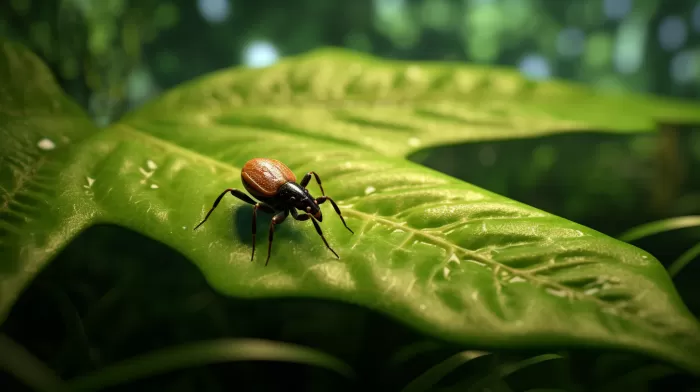Spring and summer herald the start of tick season, making it prime time to worry about Lyme disease. This debilitating illness, transmitted by the small deer tick, can have a significant impact on one’s life. In some cases, its symptoms can be mistaken for the flu, hiding the true cause until the nervous system has already sustained significant damage.
Untreated Lyme disease can result in long-lasting symptoms, including fatigue, joint and muscle pain, headaches, irritability, difficulty sleeping, and cognitive difficulties such as “brain fog,” impaired memory, and difficulty finding words.
However, the deer tick is not the only insect capable of transmitting vector-borne diseases, which are caused by microorganisms transmitted by insect bites. In fact, at least eight other varieties of ticks can transmit potentially fatal diseases. For this reason, the discovery of new tick-borne diseases is quite alarming.
Researchers in China recently discovered a virus they believe to be transmitted by a tick, which they named the “Alongshan virus” after the town where it was first found. Initially thought to be caused by the tick-borne encephalitis virus (TBEV), the Alongshan virus was identified in a 42-year-old farmer who presented with fever, headache, and nausea but tested negative for TBEV.
Over the following five months, 86 of the 374 patients presenting with similar symptoms tested positive for the Alongshan virus.
Alongshan Virus: A Growing Concern
The problem with ticks and mosquitoes is that they are difficult to track. These insects are notorious for traveling to new areas, hitching rides on other animals, or hiding in dirt and on plants. Consequently, determining where they will show up next and what diseases they might bring with them is challenging.
Research suggests that the Alongshan virus is being transmitted by the taiga tick, native to eastern Europe and parts of Asia. Still, scientists have not been able to conclusively prove this nor dismiss the possibility that the virus is also being transmitted by mosquitoes.
The Jingeman tick virus, first discovered in 2014, is closely related to the Alongshan virus and is carried by the Asian longhorned tick. This variety made its way to the United States about two years ago and has been found to feed on humans as well as animals.
Laura Goodman, an assistant research professor at Cornell University’s College of Veterinary Medicine, stated that many questions remain to be answered about these diseases. These include identifying which species are capable of transmitting them to humans and which insects carry specific diseases. Furthermore, a lack of answers means that the potential geographic range of a virus cannot yet be fully determined.
This highlights the importance of taking every precaution to protect oneself from ticks and mosquitoes.
How to Stay Protected
There are several steps one can take to minimize the risk of tick and mosquito bites during tick season while still enjoying the great outdoors. For a comprehensive guide on staying protected, it is worth examining The little bug causing a big scary meat allergy and Urgent: The newest deadly tick danger, both by Jenny Smiechowski.



